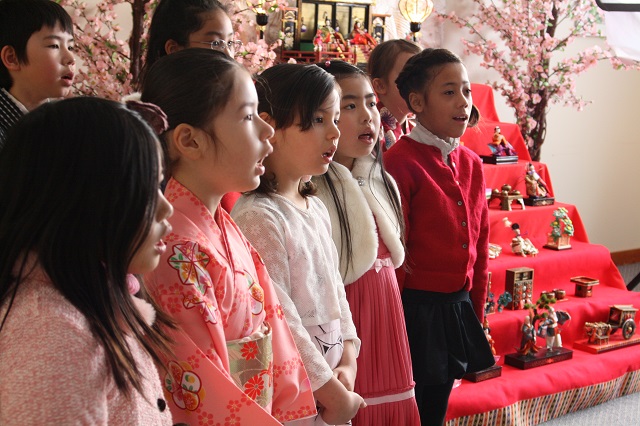April 28 2013 – As the story goes . . . more than a thousand years ago, Japanese people made paper dolls that were meant to absorb the evils and disease that afflicted little girls. In the end, these dolls were send away downstream. Nowadays, Hina dolls are given to the family of little girls. They symbolise the family’s desire for the girl to grow up healthy, safe and happy. And as the latest of many Hina dolls graces the threshold of this young Japanese Canadian family’s home, the health and success of their little baby Sachi is all but assured in this period drama, Reiko’s Hina Dolls.
The date is 1935. The place, Fraser Valley, British Columbia and a young Japanese couple are pioneering their way towards a new future in an isolated cabin with baby Sachi in tow. But, even with a wall full of Ohina-Sama Dolls as protectors, all is not well as Toki (Ami Fujimoto), the young mother eventually loses her first child. As 1936 rolls around Toki prays for good fortune as she give birth to a second girl, Reiko (Rika Kim). Fast forward to 1941, Reiko is a healthy happy little girl but the world as they know it will be forever changed on December 7th, 1941, with the Japanese bombing of Pearl Harbour.
The scourge of war had a devastating effect on all Japanese Canadians, and some in the most innocent of ways. What should have been a pleasant primary school experience was slap down just like Reiko’s lunch of pink pickles on rice that Toki had prepared. The sting of racism created a new paradigm for all Japanese living in Canada. These sentiments were revealed by super-imposing news-reel communiques directing Japanese nationals to report to the Royal Canadian Mounted Police as require by all enemy aliens. Director, Komaki Matsui heightens this tension by intercutting Japanese internment camp stills with images of Reiko sleeping while her parents argue the ramifications of going to the camp versus surviving on the run.
Fast forward to 2005 and the adult Reiko (Mitzi Doucette), now living in Edmonton donates her Ohino-Sama dolls to an Edmonton Hina Dolls Festival and tells her story of fleeing oppression. This story was inspired by a real set of Japanese Hina Dolls as we see the emotions of Reiko manifest into tears as the traditions of one generation are passed to the next.
Verdict 4 / 5: Through the impressionable eyes of little Reiko, the film, Reiko’s Hina Dolls give us a glimpse into a little-known fact that some Japanese destined for internment camps managed to escape and live on the run. And it’s through her experiences we see the devastating toll it takes on the family. Through it all, they never lost their faith or heritage, a heritage that meant imprisonment if caught. Could it be the Hina Dolls were providing Reiko and her parents safe passage? There are so many lost and untold chapters in Canada’s storied and sometime shameful war history. Komaki Matsui successfully shed light on this uncomfortable time in Canada for our generation and generations to come.
Exposing a little known chapter in Canada’s war history.
Genre: Drama
Country: Canada
Year of Production: 2012
Running Time: 15 minutes
Writer: Komaki Matsui
Producer: Komaki Matsui, Bill Kiel, Gong Kiel
Director: Komaki Matsui
Original Story: Yumiko Hoyano
Cast: Rika Kim, Mitzi Doucette, Ami Fujimoto, Toshiaki Koike, Rachael Boyce, Steve Redmond.

